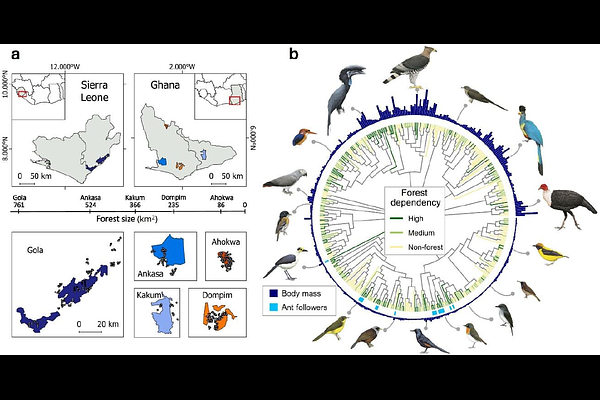Shifting baselines increase the risk of misinterpreting biodiversity trends

Shifting baselines increase the risk of misinterpreting biodiversity trends
Dellavalle, A.; Devenish, A. J. M.; Jarrett, C.; Annorbah, N. N. D.; Asamoah, A.; Boafo, K.; Lane, P. E.; Owen, J.; Morel, A. C.; Hulme, M. F.; Welch, A. J.; Norris, K.; Sanderson, F. J.; Tobias, J.
AbstractEcological studies quantifying the impact of land-use change on biodiversity may be sensitive to the choice of reference points - or baselines - particularly when sampling across human land-use gradients and other space-for-time comparisons. Much depends on whether the chosen baseline has already undergone shifts in species composition because of hunting, habitat loss and degradation. However, few studies have assessed the influence of shifting baselines on estimates of anthropogenic impacts. Using new survey data from five West African land-use gradients, we examine how habitat patch size and structure influences the estimated impact of land-use change on bird species richness and functional diversity. We show that smaller forests have already lost many forest-dependent birds, particularly those with large body size or specialised ecological niches, leading to reduced estimates of biodiversity loss after deforestation. The steepest biodiversity loss was found in mid-sized forests whereas relatively shallow declines were estimated for the most extensive forests - despite their richer taxonomic and functional diversity. In these larger forest blocks, accurate estimates of biodiversity loss may require longer transects extending beyond the biodiversity shadow caused by the more extensive spillover of forest species into the surrounding landscape, potentially linked to source-sink dynamics. These findings suggest that biodiversity assessments are highly sensitive to baseline selection and transect design, highlighting the risk of underestimating land-use impacts unless shifting baselines are carefully considered.